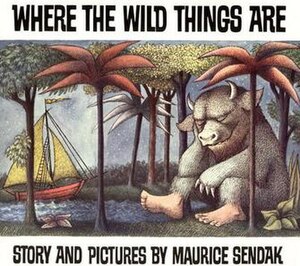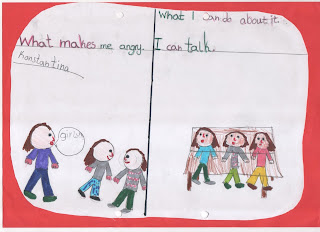- Do you remember the first time you felt really angry as a child? The first time that you had an argument with your best friend in kindergarten and thought you would be on your own for ever? Everything looks brighter when you are a child. And everything feels stronger: sadness, anger, boredom, excitement, fear. We are not born knowing how to deal with our feelings, we learn how to deal with them, once we encounter them. Young children learn how to do that as they go along, build experiences and social skills.
- Once again, literature for children can offer significant help. First of all, it helps children identify an emotional state, which they might not have encountered before. Through stories they realise that they are not the only ones that feel the way they do, other people feel that way, too. Books are also a great way to suggest solutions and ways to deal with feelings. What is, at least to me, very important is that books can alleviate the feeling of guilt for the way children feel.It is only human to feel angry, sad, or afraid.
- What follows is a compilation of books that deal with feelings. I hope you find them useful.
1. Where the Wild Things Are, by Maurice Sendak.
 |
| Picture via Wikipedia. Click here for more information on the book and M. Sendak. |
A little boy throws a tantrum and gets sent to bed without dinner. His frustration opens a door to a far away land, inhabited by angry monsters. Though they threaten to eat him up, in this world, he is more powerful than them, manages to control them and finally becomes their monarch.
The book deals with the issue of anger, but also there are issues of overpowering others and control, that are more evident in the film released in 2009.
2. My Many Coloured Days, by Dr.Seuss.
 |
| Photo via Wikipedia. Click here for more information on the author and the book. |
Another wonderful book by one of my favourite authors. It goes through a range of emotions, each of which is depicted through a colour. How many times have we said to someone: "You are unfair". or "You are naughty"., when all we really meant was: "You are being unfair"., or "You are being naughty."? We are entitled to mood changes and our students and children should know that.
3. Alexander and the Terrible,Horrible, No Good, Very Bad Day, by Judith Viorst.
 |
| Photo via Wikipedia. Click here for more information on the author and the book. |
This book was suggested to me by my colleague Zoe B. , to be read in classrooms with anger management difficulties. I haven't tried it yet, but I find very witty, clever and fun to read. We all have difficult days and we have to learn to take them in our stride.
4. Fears, by Todd Parr
I have mentioned one too many times how much I love Todd Parr books. This book goes through what a child, not to mention an adult, may fear and offers ways to overcome our fears through humour. You got to love it.
Follow up Classroom Activities.
Teach your students to identify feelings and learn to deal with them. Read them one or all of the above books, hold a classroom conversation and ask them to depict their feelings. This is what we came up with my Second Grade.
 |
| What makes me angry. What I can do about it. |
 |
| What makes me happy. |
You might also like:

